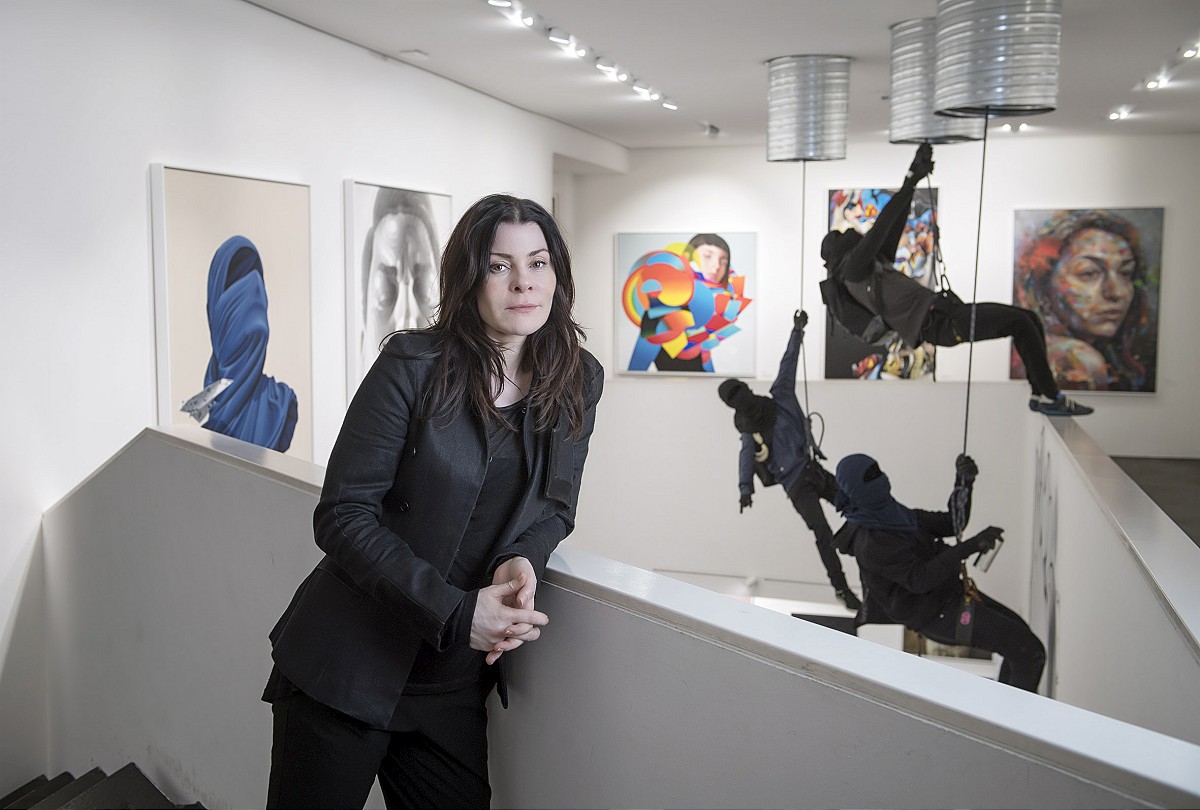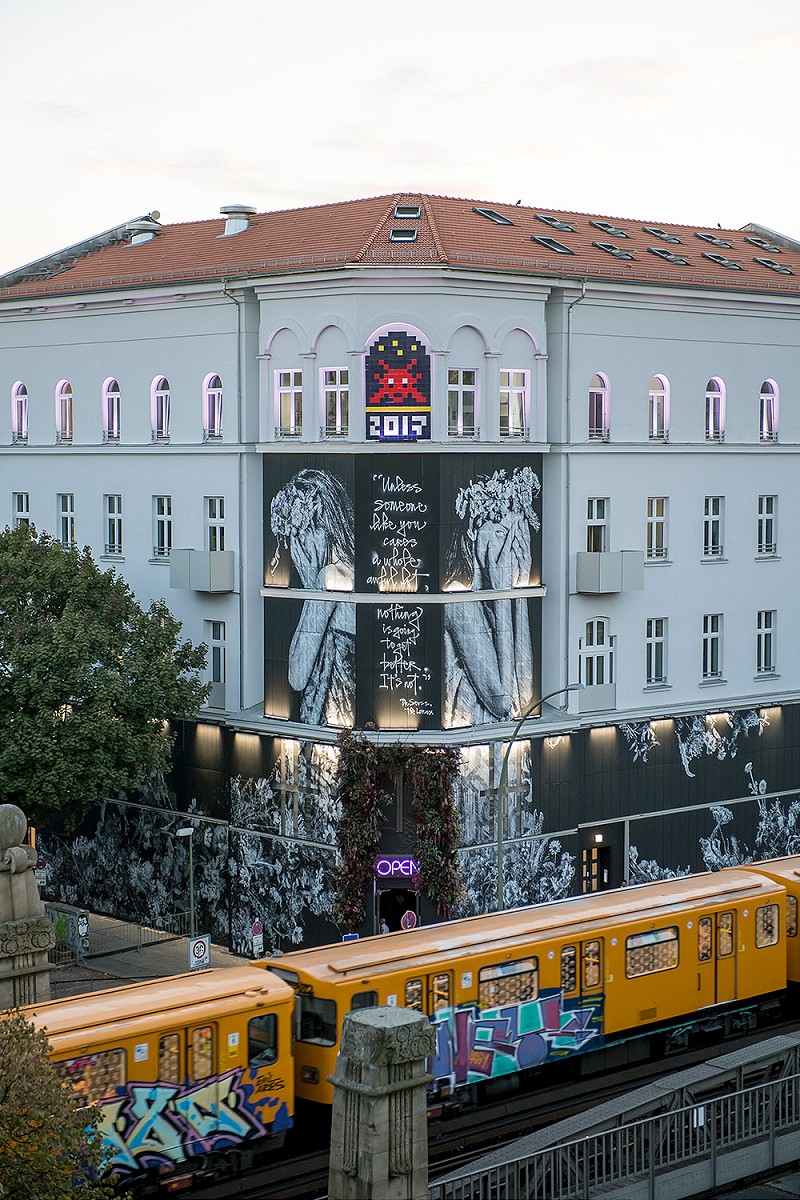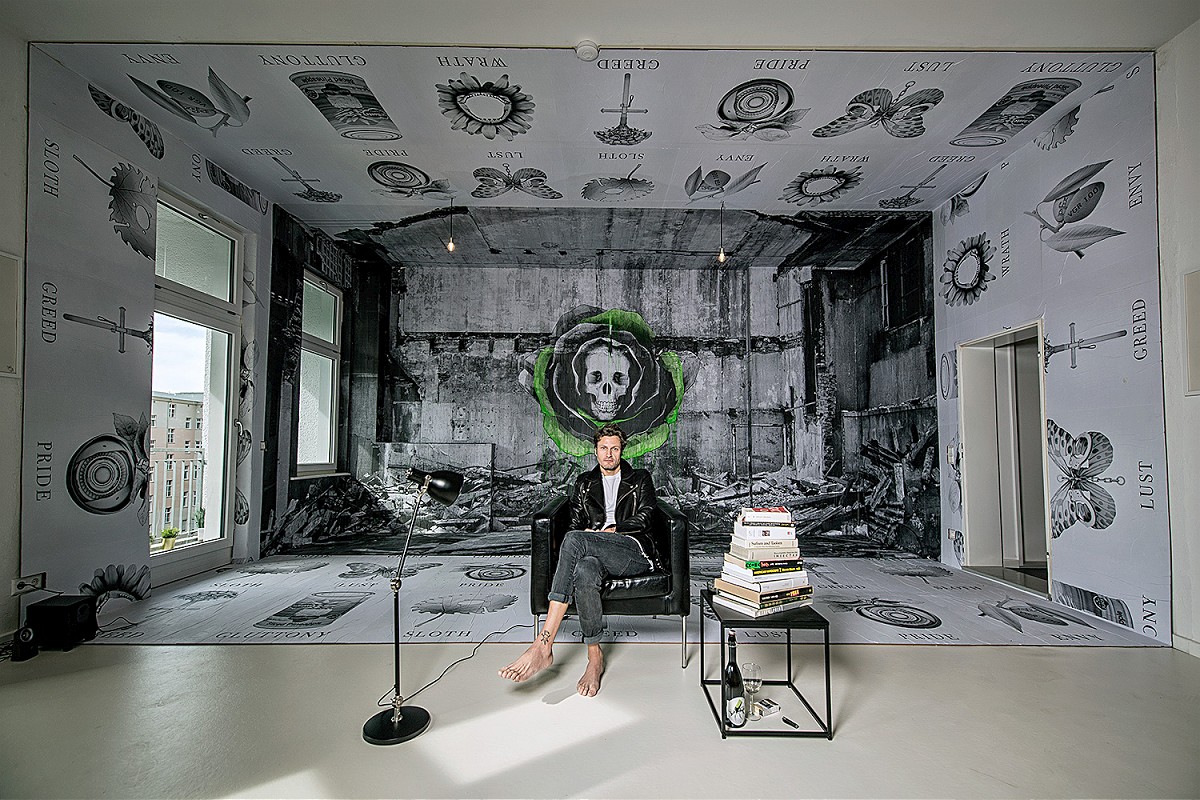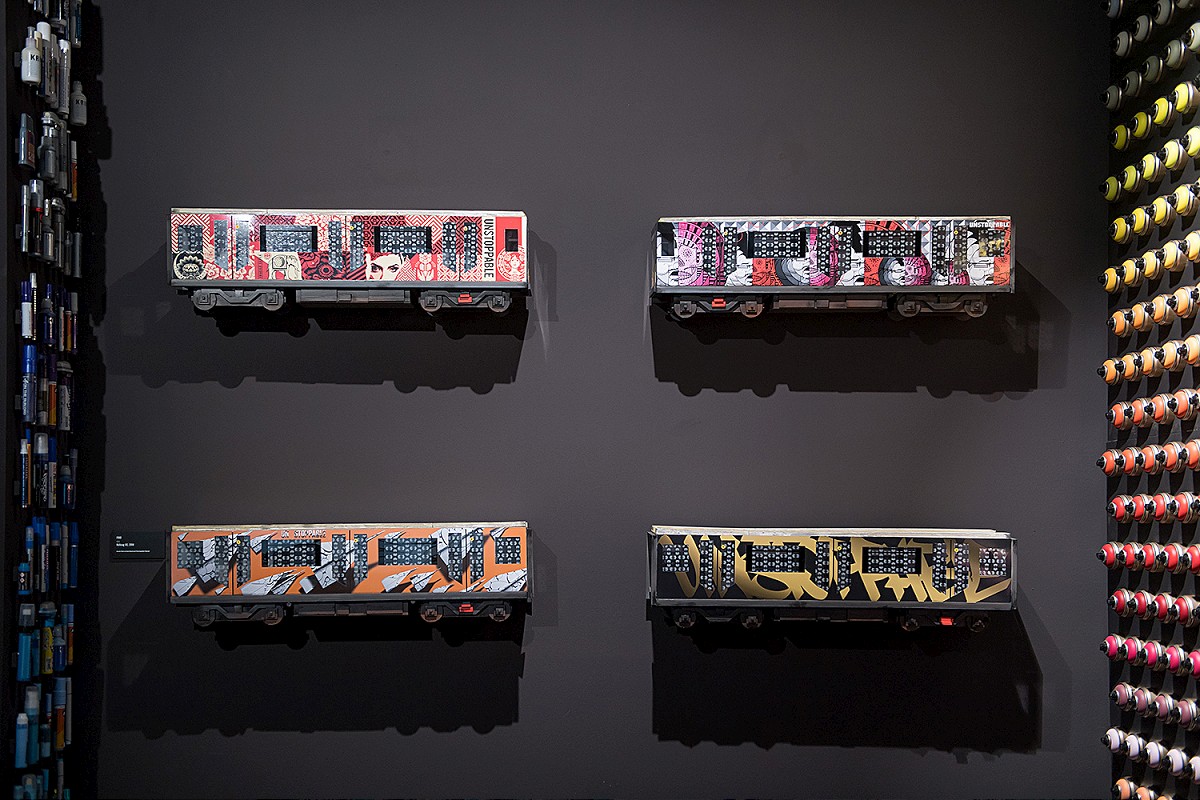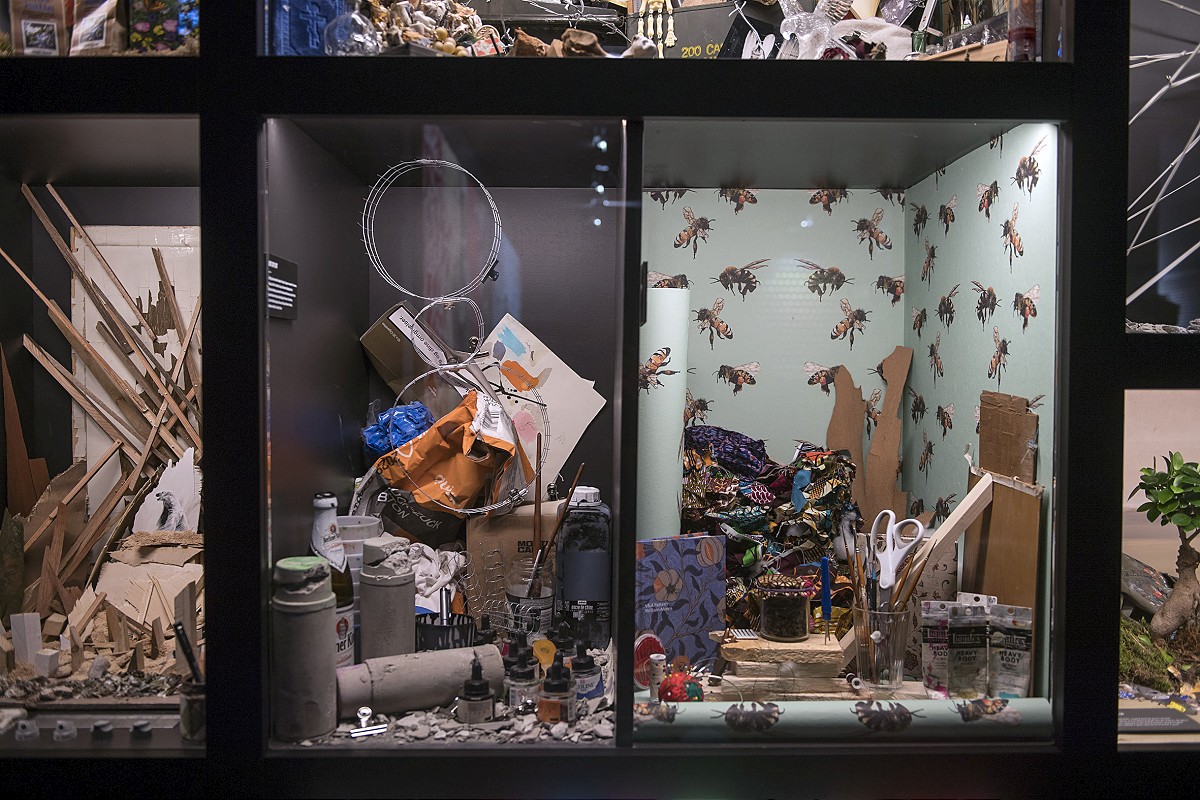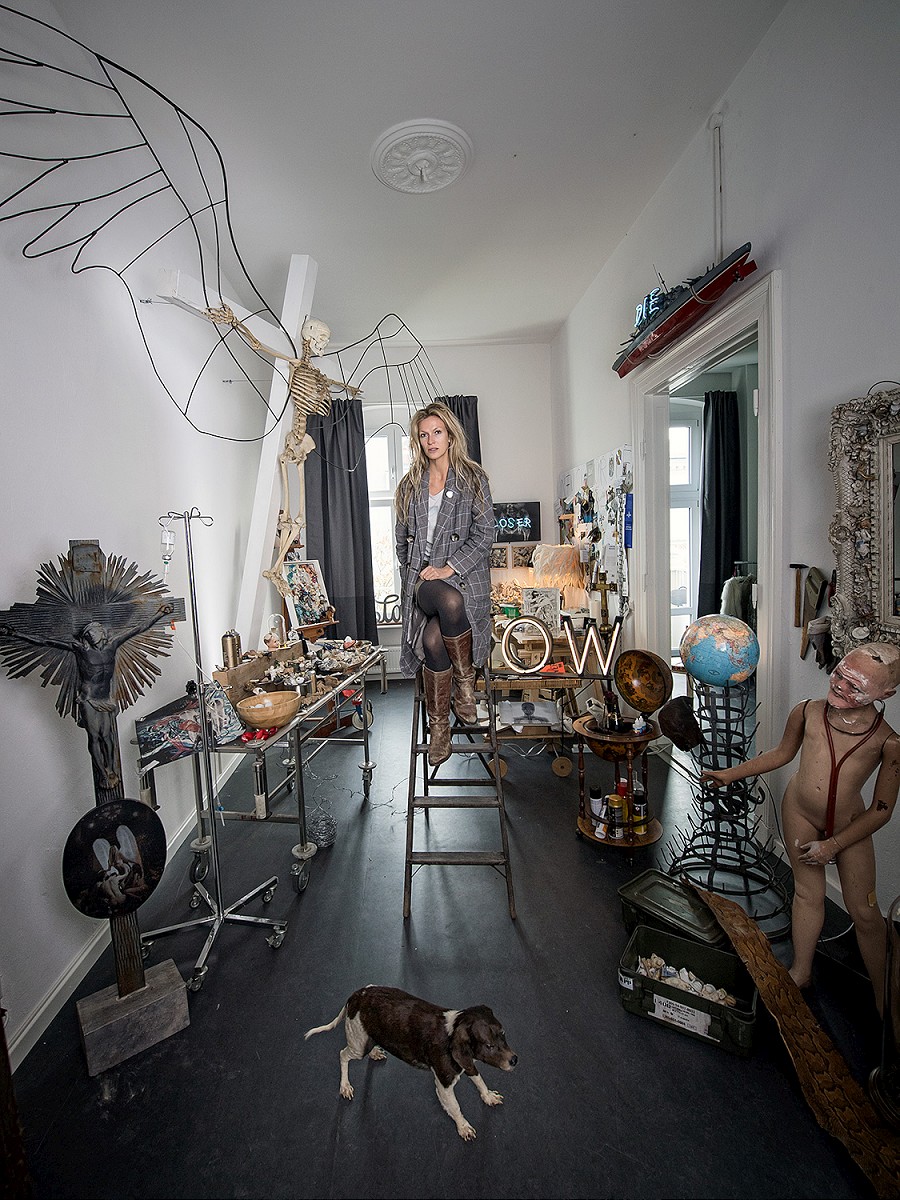Last weekend marked the official opening of the second large exhibition of Urban Nation, Berlin’s unique and world’s museum of urban contemporary art. Featuring works by 50 artists from around the globe, including some of our favorites such as DALeast, Damien Hirst, Herakut, Jeff Soto, João Ruas, Sergio Garcia, Shepard Fairey, SHOK-1, Swoon and Vhils, the event also included the open studios of UN’s newest art residency program. We had a chance to sit and chat with Yasha Young, the director and curator of UN, and talk about the show that just opened doors to the public, the residency program that is now open to new applicants, as well as touch base on what’s been accomplished and what’s in the works for the foreseeable future.
Sasha Bogojev (SB): The exciting weekend in Berlin is just behind us, how are you feeling about what was accomplished and presented to the visitors?
Tasha Young (YY): To me, it was exciting to bring my vision and curation of UN to somewhat of a milestone. The house is now completed and ready to work if you will. I was able to build the museum and the residency and keep the street projects alive and relevant surrounding my idea of the living museum. I went a very different route than the first exhibition and the response of artists and community or visitors was and is phenomenal. Learning about the techniques, actually seeing the tools in the beautiful vitrines that are artworks in themselves, and being able to follow the process and projects. Whether it was via the multimedia tunnel with the 85 movies or the movie we commissioned by 1UP explaining the process of graffiti and how it works. The lingo was of great interest to the visitors, as were the interactive kids’ segments, or the timeline that starts in 2013 bringing together the entirety that Urban Nation and my concept was and is.
SB: The second UN show strongly relies on your past projects. How do you feel about you guys creating your own legacy within the movement?
YY: It is not about creating a legacy. It is about UN-derstanding the power of art and what we have done to get this far. I think very few people knew about us when we had just cardboard and windows. When I invited Nuart in 2013 to curate the Project M 3rd edition (covered), I had already presented two editions prior to that with artists such as Ron English and Faile and no one knew or understood what we were back then. But this was all part of the long-term plan and so I safely put the work in art storage. Slowly, one after the other, we restored the works in agreement with the artist, to be able to bring the backbone of the idea of the project back. The art and artists in this exhibition tell the story again, now that people listen and know about us. Project M is UN’s heart and the works were so beautiful, I wasn’t going to let them sit in storage. Work needs to be seen and respect needs to be given to those who came and worked with me when there was not much to go by apart from my idea.
SB: Can you tell us a bit about the Black Box concept and the way visitors are getting directly involved in the entire experience?
YY: It’s a simple reference to the illegal portions of the work and the night which is a strong companion of this art even still today. It put the focus on the work that is also lit almost as in a streetlight manner and gives the viewer the opportunity to go UN-dercover and discover corners and hidden spaces all on their own in the safety or with the feeling of darkness. It makes the exchange between viewer and art or artist an even more intimate and personal one. It also forces the viewer to remember, not via social media but via the human brain, as taking pictures is deliberately almost impossible. Visitors can take away a piece of art from our oversized wall posters, they can play with a puzzle we created to make an artwork come to life and mark the neighborhood the artwork exists in, and they can change the display of some of the works. The vitrines we build that display the techniques and tools as well as the process are fascinating even for me, every time. Pulling out the cupboards filled with t-shirt and stickers dating back to the 70s enhances the sense of exploration and the dive into history.
SB: Another way of them getting close and personal with the work and artists is the residency program. When did you start with that?
YY: The idea was part of my concept which I developed 10 years ago. After the museum was opened, we started building out the last portion of the house and completed 11 residencies in just a little over 1 year. The planning, however, started at the same time as the plans for the museum.
SB: Are you personally involved in it and in what capacity?
YY: Yes, I am the VP of the jury I put together which will support me in deciding on possible candidates out of all the applications. I wanted a jury of there other institutional leaders, professors, journalists or art critics or collectors, to support me and the artists, and to push me and the program and its participants even further. To keep a fresh eye, the jury will change every year.
SB: Which artists did already take place in the program, and can you reveal which ones will be included in the future?
YY: Li Hill, Onur, Wes21, Herakut, Mia Florentine Weiss, Snik, Sebastian Wandel, Christian Böhmer, Sellfable, Quintessenz, NeSpoon, Louis Masai, Ludo, DotDotDot, Pink Power, Mateus Baillon, Sabek and a few more. The program goes online for applications in the spring of 2019 and we are excited to see who will apply!
SB: How long does each residency take, and how many are you planning to do?
YY: Residencies run from 3 -6 months and we can host a total of 33+ artists in a year. They are fully funded with 1000 Euros per month as well as materials. Hence the very strong curatorial and mentorship portion of the program. It is a huge responsibility for both sides, the artist and UN. I like to reach the point where we are consistently booked and open each year in the fall with a massive open studio and related exhibition.
SB: Can anyone apply for the residency and what are some of the key features of it?
YY: Yes, you can apply if your work has a background in UCA meaning had a public portion and a street related aspect, Graffiti, Artivism, Public Art, Activism, and all the other facets that make this genre etc. Key features of the application are that you will have to provide a clear idea of your project, cost and planning for the 3 or 6 month period, a plan on how to work with our social project e.g. give a workshop or hold a lecture and an essay on why this program is important to you for your career and what you envision it will give back to you or the community.
SB: Where are the studios located and are artists able to collaborate during their stay?
YY: The studios are inside the museum on the 3rd, 4th and 5th floor. Collaboration is strongly encouraged as well as joint applications of two artists planning on working together.
SB: Since we’re talking about urban art, are there any public space elements included in the program?
YY: Yes, we go from working on walls to installations around the UN to working in the museum for our “Live at the museum” portion of the project and then some. (laughs)
SB: Are the works produced during the stay going to museum collection or are there other options or plans?
YY: We will keep one work for our archive and the permanent collection. Apart from that, we have to wait and see what the work will be created for and what the individual project proposals for the residencies will be. For example, an artist may work on a huge sculpture that will be permanently placed in and around the city or someone needs space to finish a book or cut a film. There are so many options, it will be exciting to see where we can take this program.
SB: Is there a social side to it as is the case with some other UN projects?
YY: Yes, the above-mentioned workshops and lectures as well as guided tours of the program for schools and studio visits. We always plan in social and educational aspects in all our programs. It’s what we believe in.
SB: Is this planned to be a permanent part of the Urban Nation Museum for Contemporary Urban Art and are there other similar projects in the works?
YY: This will be a permanent part, hopefully for many many decades to come. I am planning to implement and host an exchange program with other institutions located around the world, always true to our goal to connect, create, and care, far beyond the building or the city, but worldwide and for an ever-changing community.
Photo credit: Nika Kramer.



